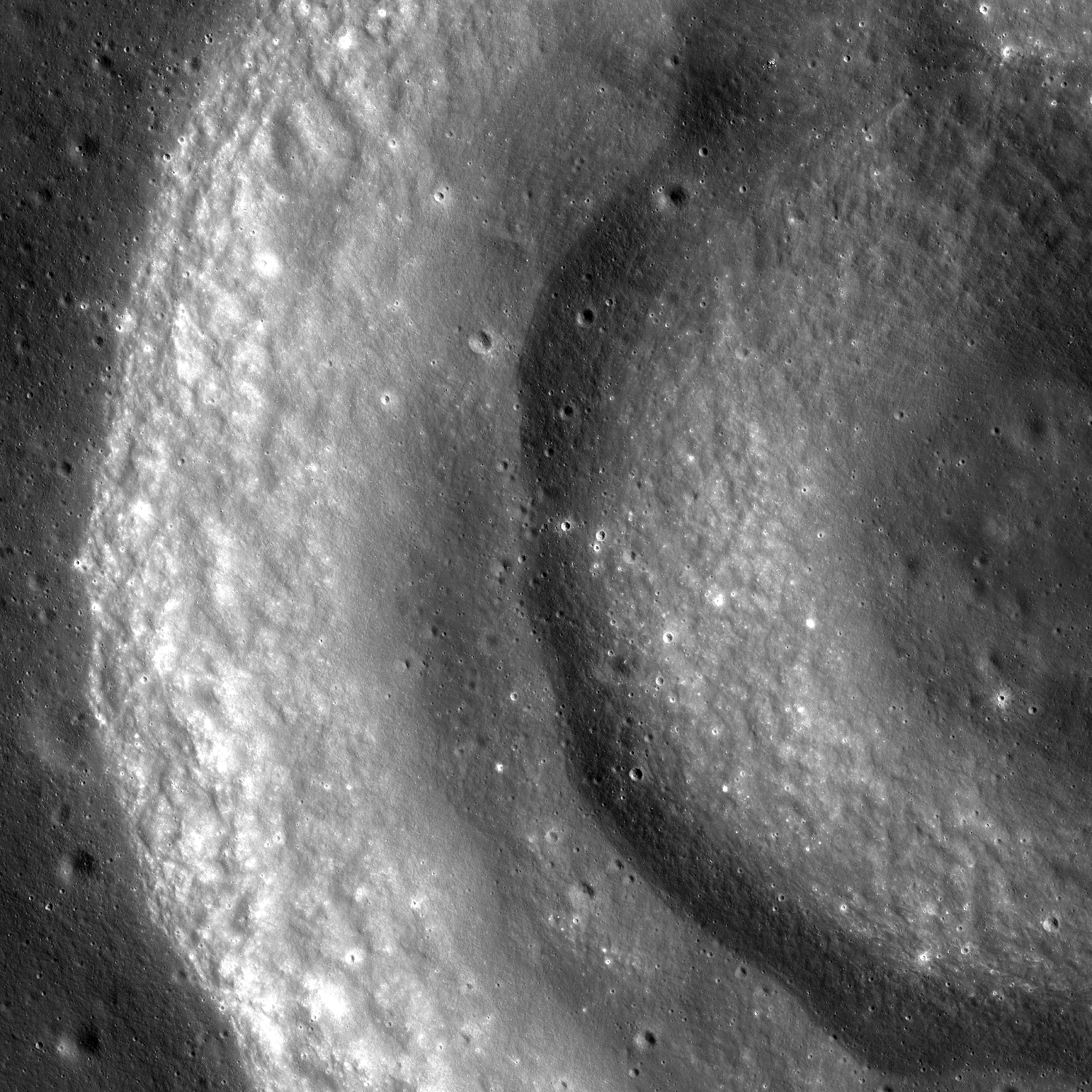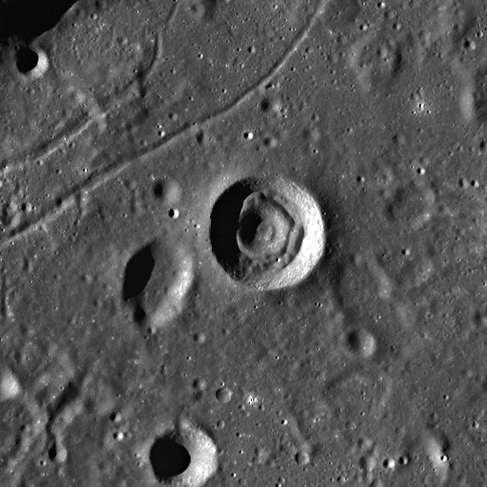
The double-arch shape in the Featured Image is a portion of an unnamed concentric crater located in the northwestern extent of Apollo Basin (basin center at 35.687°S, 208.232°E). The concentric crater has an inner ring, centered on 30.757°S, 205.931°E, a middle ring, and then the crater rim. The crater formed within the mare basalt that fills Apollo Basin. The formation mechanism for concentric craters like this one is not entirely clear. One theory is that the target material is made of multiple stratigraphic layers with different strengths. If the difference between the strengths of the layers is great enough, the impact may form concentric rings. Bench craters also form when target layer strengths are different.
In the late 1960s laboratory experiments replicated the concentric shape of craters using targets with loose, granular material over stronger, more cohesive layers. The laboratory experiments use different materials and are at smaller scales than their lunar counterparts. Still, experiments like these are important for comparing what we see on the lunar surface to basic physical principles. What if an impact occurs in an area with highland material as one layer and then mare basalt as a second layer? What crater shape is produced if you introduce a regolith layer? These are the questions that lunar geologists use to design their experiments.
Explore the entire LROC NAC mosiac!
Related Images:
Apollo Basin: Mare in a Sea of Highlands
Published by Sarah Braden on 22 May 2013
